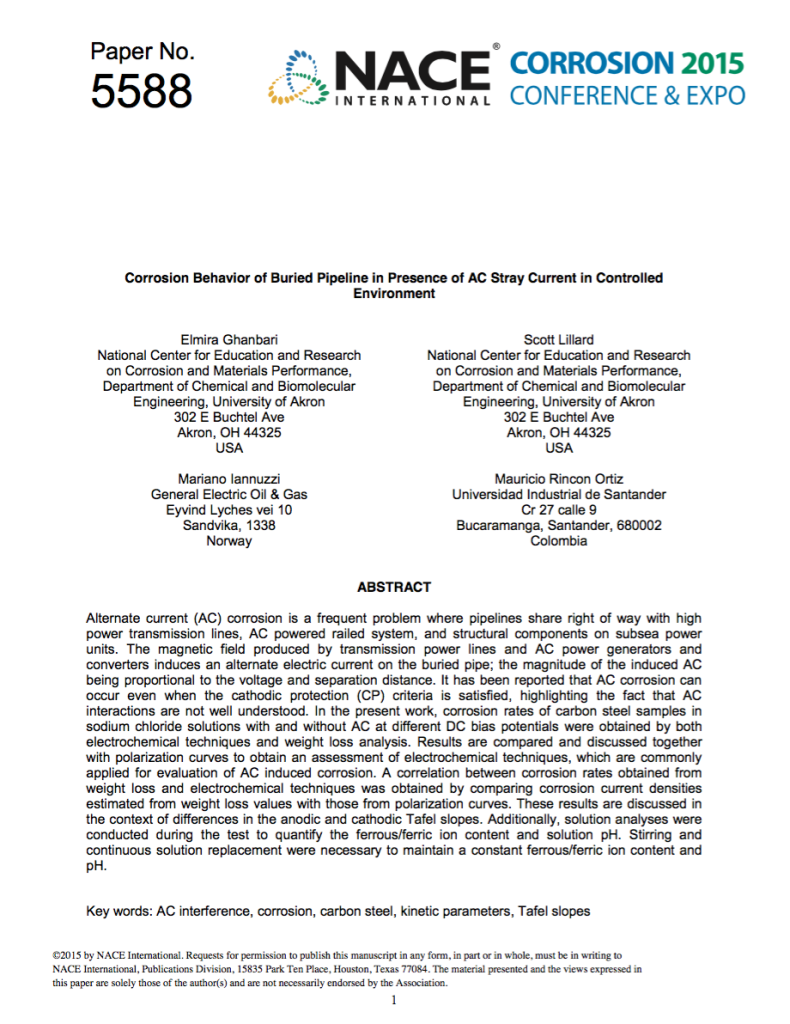Together with my former Ph.D. student, Elmira Ghanbari, my colleagues and good friends Prof. Scott Lillard and Prof. Mauricio Rincón Ortiz, this paper at the NACE CORROSION 2015 annual conference. The manuscript was presented at the “DC and AC Transit Stray Current Interference” symposium.
Elmira developed a model, based on fundamental corrosion principles, which estimates the effect of an applied AC interference on Faradaic processes leading to corrosion. The full manuscript can be downloaded HERE or by clicking on the figure below.
Abstract
Alternate current (AC) corrosion is a frequent problem where pipelines share the right of way with high power transmission lines, AC powered railed system and structural components on subsea power units. The magnetic field produced by transmission power lines and AC power generators and converters induces an alternate electric current on the buried pipe; the magnitude of the induced AC being proportional to the voltage and separation distance. It has been reported that AC corrosion can occur even when the cathodic protection (CP) criteria are satisfied, highlighting the fact that AC interactions are not well understood.
In the present work, corrosion rates of carbon steel samples in sodium chloride (NaCl) solutions with and without AC at different direct current (DC) bias potentials were obtained by both electrochemical techniques and weight loss analysis. Results are compared and discussed together with polarization curves to obtain an assessment of electrochemical techniques, which are commonly applied for evaluation of AC induced corrosion. A correlation between corrosion rates obtained from weight loss and electrochemical techniques was obtained by comparing corrosion current densities estimated from weight loss values with those from polarization curves. These results are discussed in the context of differences in the anodic and cathodic Tafel slopes. Additionally, solution analyses were conducted during the test to quantify the ferrous/ferric ion content and solution pH. Stirring and continuous solution replacement were necessary to maintain a constant ferrous/ferric ion content and pH.

Citation
E. Ghanbari, M Rincón-Ortiz, M Iannuzzi, and S Lillard, “Corrosion Behavior of Buried Pipeline in Presence of AC Stray Current in a Controlled Environment,” CORROSION/15, Paper No. 5588 (NACE International, Dallas, TX, March 15–19, 2015).